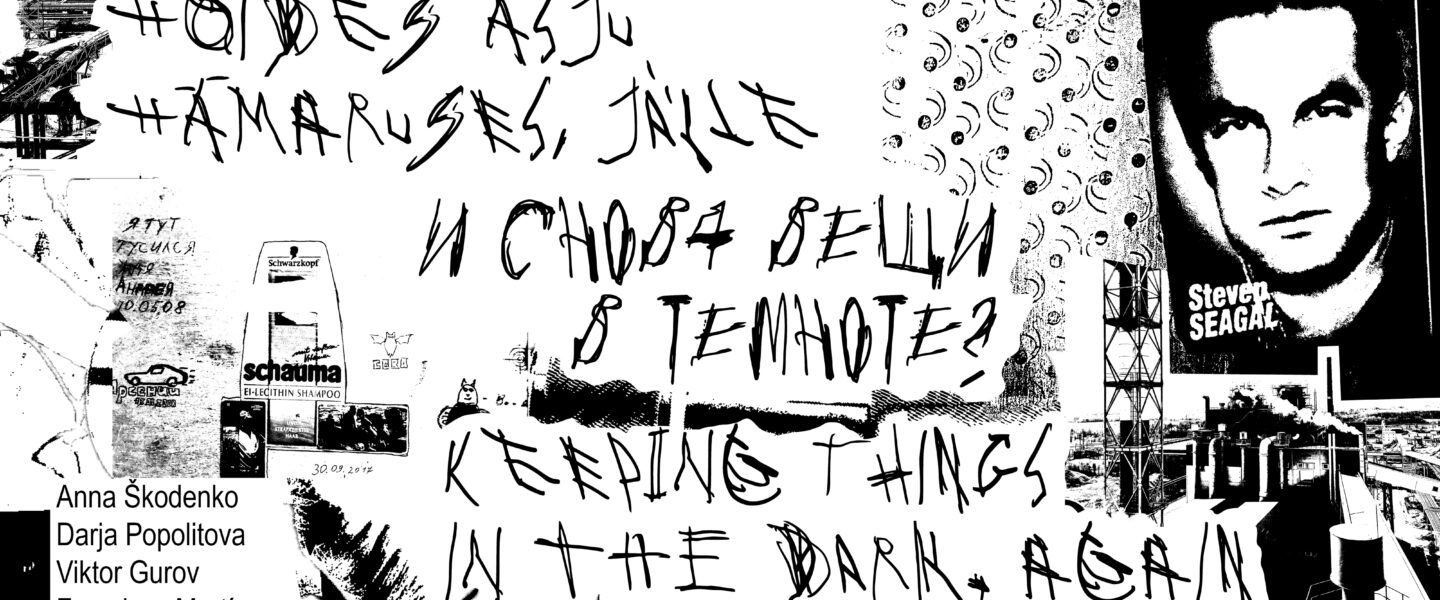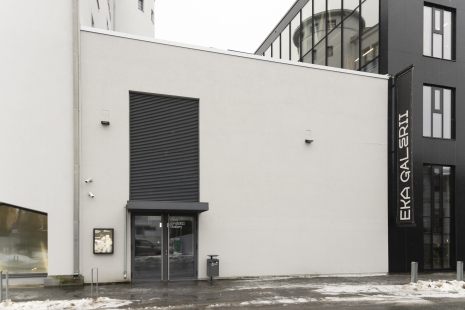A four-artist installation has been the first outcome of our collective work, which was exhibited in the Riga Art Space (2022) and at the Sillamäe Museum (2023). In the meantime, we have been developing our installation and continued with our research and the exchange of ideas. As a result, we have created 4 new, individual works:
THE PAST OF THE FUTURE—this installation stages a series of encounters with the time capsule buried into the ‘Glory to Labour’ monument in 1971 in Kohtla-Järve, which is supposed to be opened in 2046 but was accidentally unearthed in 1996.
KRATT© MADE IN IDA-VIRUMAA—a wall installation consisting of sculptured oil shale fragments exposed on 3D-printed shelves. Kratt is a workaholic mythological creature who destroys oneself when its creator entrusts it with impossible tasks.
CAVE GHOSTS—an installation that combines fumage aesthetics with spatial design. By covering the entrance to the gallery, it reproduces the experience of descending a staircase and stepping into a cellar. Or into a mining tunnel.
LIQUID SHADOWS AT THE BORDER—a series of Byzantine collages inspired by the bonding gestures of garage users in Kulgu (aka ‘Narva Venice’). This is a male, amphibious territory for doing things other than in the city and being in time at ease.
What had been concealed and kept in the dark has a particular efficacy while resurfacing and being on display. This exhibition presents different instances of this, reflecting on material hoarding, messages for the future, existentialist aesthetics and shelters where to test different sides of the self. People need hideouts and places to store things in the dark. The main installation deals with this issue and is composed of 4 parts: the ‘Cellar Door’ video installation in which Jelena guides us around her cellar in Kohtla-Järve; the audio-visual sculpture titled ‘Баю-бай’ introduces a surreal video located in a sculpture in the form of a stroller; the visual representation ‘Sartre downstairs’ of various existential messages found in local basements; and ‘Subterranean biographies’, which displays a series of extracted objects alongside personal stories.
Anna Škodenko (b. 1986) is a multidisciplinary artist and guest lecturer at the Estonian Academy of Arts. Her work is characterized by a lyrical and analytical approach to the medium and the visual image.
Darja Popolitova (b. 1989) is a multidisciplinary artist, guest lecturer and doctoral student at the Estonian Academy of Arts. Darja creates jewellery and video installations on the topic of digital culture, mixing it with pseudo-magical aesthetics.
Viktor Gurov (b. 1989) is an artist and graphic designer interested in urban landscapes and decommissioned places. He works as creative director of the Estonian National Library.
Francisco Martínez (b. 1982) is an anthropologist of Tampere University dealing with contemporary issues of material culture through ethnographic experiments. In 2018, he was awarded with the Early Career Prize of the European Association of Social Anthropologists.
We express our gratitude to Pire Sova, Svetlana Ivanova, Ekaterina Grafova, Jelena Mutonen, Andrei Mitkovets, Nadežda Popolitova, Jakob Tulve, Andres Nõlvak, Allar Rebane, Madis Kaasik, Riina Varol, Mari Kivipõld, Taavi Teevet, Dmitri Fedotkin, Enas Amerkhanov, Dept. of Jewelry and Blacksmithing, WasteMatters ERC project, and, overall, to all who have contributed to the exhibition in different ways.





